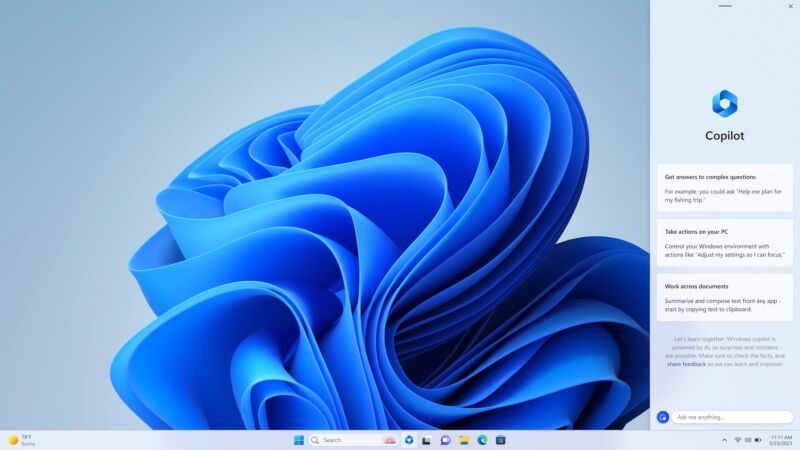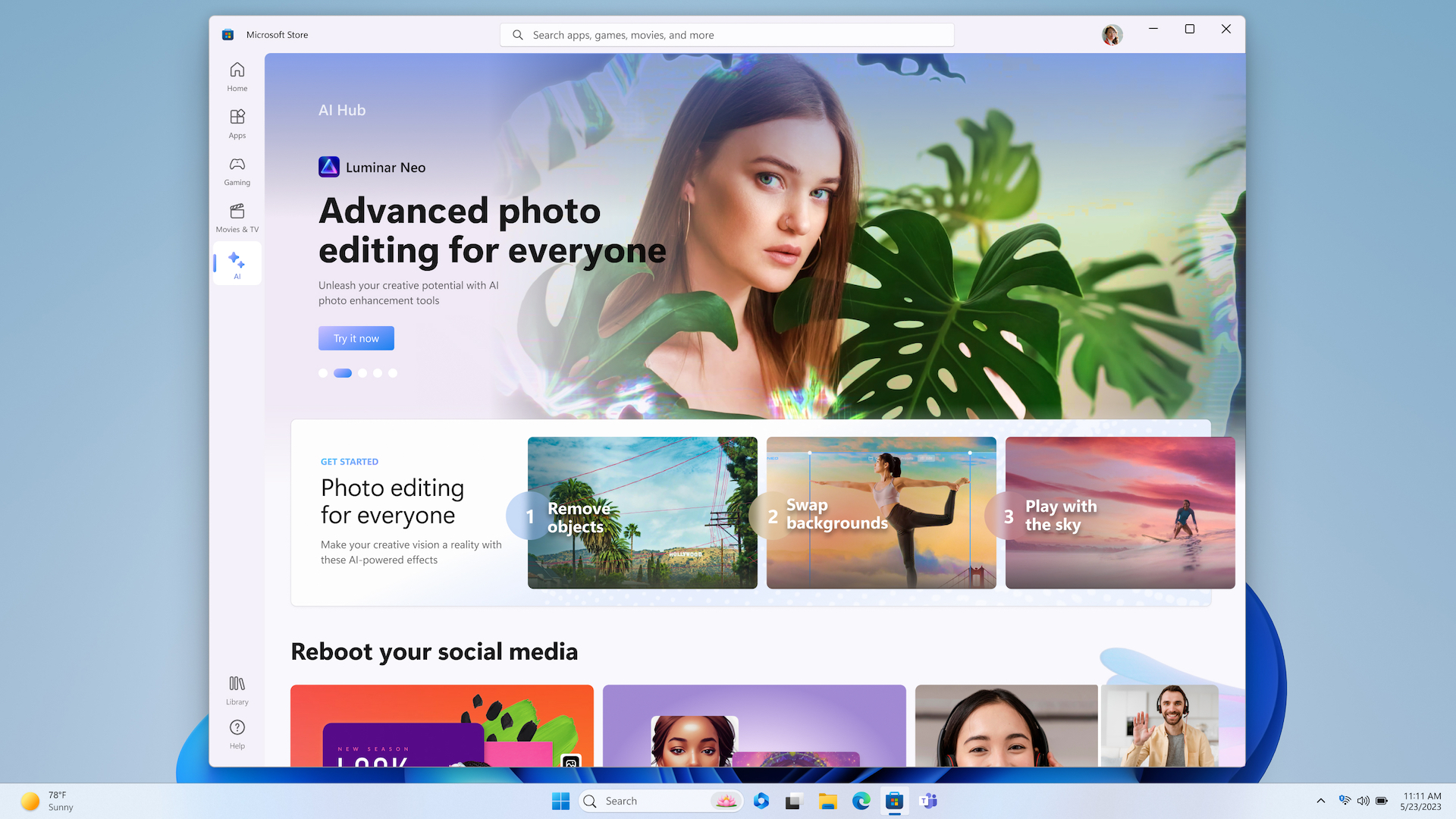
A couple of months ago, Microsoft added generative AI features to Windows 11 in the form of a taskbar-mounted version of the Bing chatbot. Starting this summer, the company will be going even further, adding a new ChatGPT-driven Copilot feature that can be used alongside your other Windows apps. The company announced the change at its Build developer conference alongside another new batch of Windows 11 updates due later this year. Windows Copilot will be available to Windows Insiders starting in June.
Like the Microsoft 365 Copilot, Windows Copilot is a separate window that opens up along the right side of your screen and assists with various tasks based on what you ask it to do. A Microsoft demo video shows Copilot changing Windows settings, rearranging windows with Snap Layouts, summarizing and rewriting documents that were dragged into it, and opening apps like Spotify, Adobe Express, and Teams. Copilot is launched with a dedicated button on the taskbar.
"Once open, the Windows Copilot side bar stays consistent across your apps, programs and windows, always available to act as your personal assistant. It makes every user a power user, helping you take action, customize your settings, and seamlessly connect across your favorite apps," wrote Microsoft Chief Product Officer Panos Panay.
Microsoft didn't talk about the privacy and security considerations of Windows Copilot—whether users can expect the contents of their documents to be kept private, what processing is happening locally on your device versus on Microsoft's servers, and whether chat history and contextual information will be saved between sessions or even synced between computers. We'll presumably learn more about this as the feature gets closer to launching.
Whatever you think of Microsoft's relentless push into AI this year, it has been fascinating to watch Windows 11 evolve from "Windows 10 but nicer looking" to an OS with baked-in AI features in the space of a year. In the days of Windows 7 and Windows 8, it took Microsoft much longer to shift gears and respond to new developments. Whether that's a good thing depends on your perspective—millions of Windows 11 users will be offered generative AI assistance whether they want it or not—but it's a very different approach to Windows than the one Microsoft used a decade ago.
Other new Windows 11 features

Copilot is the flagship feature of this batch of Windows 11 updates, but it's not the only way Microsoft has found to insert AI into Windows 11. The Microsoft Store will get a new "AI Hub" section, a top-level navigation option alongside the buttons for apps, movies and TV, and gaming categories. The AI Hub will offer generative AI apps for text, images, and more, and the store will also be able to create AI-generated summaries of all the reviews on a given app. These features are coming "soon."
A few features are arriving even sooner than soon. Among the features that Microsoft VP Aaron Woodman says will be launching "tomorrow" is a new setting to enable and disable presence-sensing features, in addition to related features like wake-on-approach; a new shield icon that will appear over your Wi-Fi icon in the taskbar when you're "connected to a recognized VPN"; live audio captions for 10 additional languages; and a tweaked design for the Widgets area. At some point in the future, Windows devices with compatible hardware will also gain support for Bluetooth Low-Energy Audio.
Since Build is a developer conference, there were also features announced specifically for developers. Dev Home is a new app that facilitates quick setup for new development PCs, providing the ability to sign into GitHub, automatically clone repositories, install apps, monitor system performance, and set up ReFS-based "Dev Drives" on local storage that "improve performance for key developer workloads."
What we still haven't heard much about is the Windows 11 23H2 update, which should theoretically be the operating system's next major yearly feature update. By this time last year, the foundation of the Windows 11 22H2 update was finished and available to Windows Insiders for testing, but all of the current Windows Insider builds are still using 22H2 version numbering.
Microsoft has de-emphasized these yearly updates over Windows 11's lifecycle, shifting instead to releasing a steady drip of features that come out whenever they're ready. It may be that the 23H2 update is even smaller in scale than the 22H2 update was, and it may have less development lead time. The company could also change its update strategy again and move away from these yearly version changes; Microsoft has already announced the end of yearly feature updates for Windows 10.
Listing image by Microsoft
Reader Comments (173)
View comments on forumLoading comments...